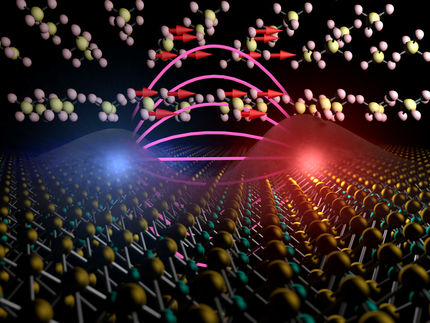First-ever videos show how heat moves through materials at the nanoscale and speed of sound
Using a state-of-the-art ultrafast electron microscope, University of Minnesota researchers have recorded the first-ever videos showing how heat moves through materials at the nanoscale traveling at the speed of sound.
The research, published today in Nature Communications, provides unprecedented insight into roles played by individual atomic and nanoscale features that could aid in the design of better, more efficient materials with a wide array of uses, from personal electronics to alternative-energy technologies.
Energy in the form of heat impacts all technologies and is a major factor in how electronic devices and public infrastructure are designed and engineered. It is also the largest form of waste energy in critical applications, including power transmission and especially transportation, where, for example, roughly 70 percent of the energy in gasoline is wasted as heat in automobile engines.
Materials scientists and engineers have spent decades researching how to control thermal energy at the atomic level in order to recycle and use it to dramatically increase efficiencies and ultimately drive down the use of fossil fuels. Such work would be greatly aided by actually watching heat move through materials, but capturing images of the basic physical processes at the heart of thermal-energy motion has presented enormous challenges. This is because the fundamental length scales are nanometers (a billionth of a meter) and the speeds can be many miles per second. Such extreme conditions have made imaging this ubiquitous process extraordinarily challenging.
To overcome these challenges and image the movement of heat energy, the researchers used a cutting-edge FEI Tecnai™ Femto ultrafast electron microscope (UEM) capable of examining the dynamics of materials at the atomic and molecular scale over time spans measured in femtoseconds (one millionth of a billionth of a second). In this work, the researchers used a brief laser pulse to excite electrons and very rapidly heat crystalline semiconducting materials of tungsten diselenide and germanium. They then captured slow-motion videos (slowed by over a billion times the normal speed) of the resulting waves of energy moving through the crystals.
"As soon as we saw the waves, we knew it was an extremely exciting observation," said lead researcher David Flannigan, an assistant professor of chemical engineering and materials science at the University of Minnesota. "Actually watching this process happen at the nanoscale is a dream come true."
Flannigan said the movement of heat through the material looks like ripples on a pond after a pebble is dropped in the water. The videos show waves of energy moving at about 6 nanometers (0.000000006 meters) per picosecond (0.000000000001 second). Mapping the oscillations of energy, called phonons, at the nanoscale is critical to developing a detailed understanding of the fundamentals of thermal-energy motion.
"In many applications, scientists and engineers want to understand thermal-energy motion, control it, collect it, and precisely guide it to do useful work or very quickly move it away from sensitive components," Flannigan said. "Because the lengths and times are so small and so fast, it has been very difficult to understand in detail how this occurs in materials that have imperfections, as essentially all materials do. Literally watching this process happen would go a very long way in building our understanding, and now we can do just that."
Original publication
Most read news
Other news from the department science

Get the chemical industry in your inbox
By submitting this form you agree that LUMITOS AG will send you the newsletter(s) selected above by email. Your data will not be passed on to third parties. Your data will be stored and processed in accordance with our data protection regulations. LUMITOS may contact you by email for the purpose of advertising or market and opinion surveys. You can revoke your consent at any time without giving reasons to LUMITOS AG, Ernst-Augustin-Str. 2, 12489 Berlin, Germany or by e-mail at revoke@lumitos.com with effect for the future. In addition, each email contains a link to unsubscribe from the corresponding newsletter.






























































